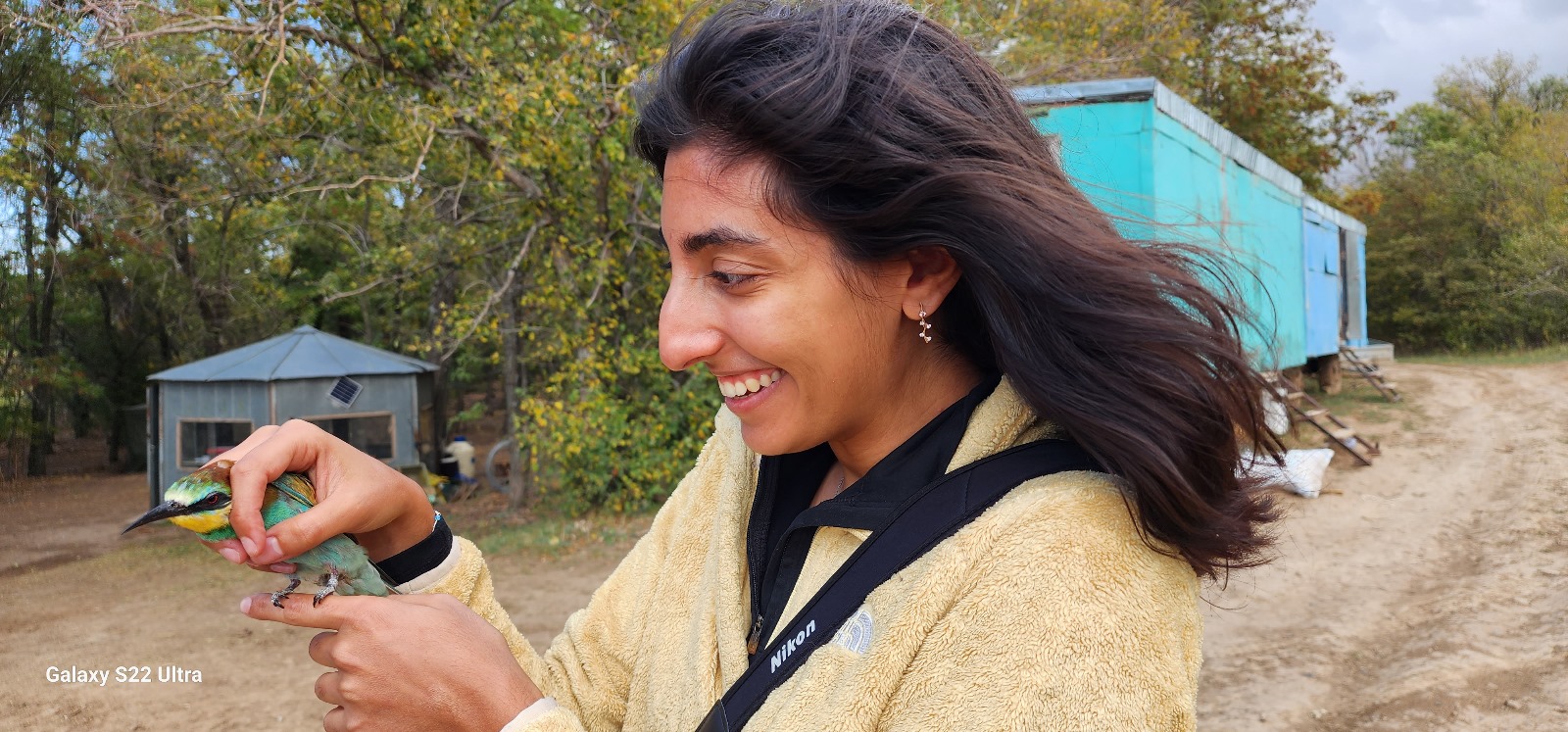Nicole Ibrahim, a doctoral student from the United States (University of Maryland Center for Environmental Science Appalachian Laboratory), completed a six-month internship at the Institute of Zoology under the Ministry of Science and Higher Education of the Republic of Kazakhstan. She worked in the Laboratory of Ornithology and Herpetology under the supervision of Andrey Eduardovich Gavrilov, a leading researcher and head of the Bird Banding Research Center.
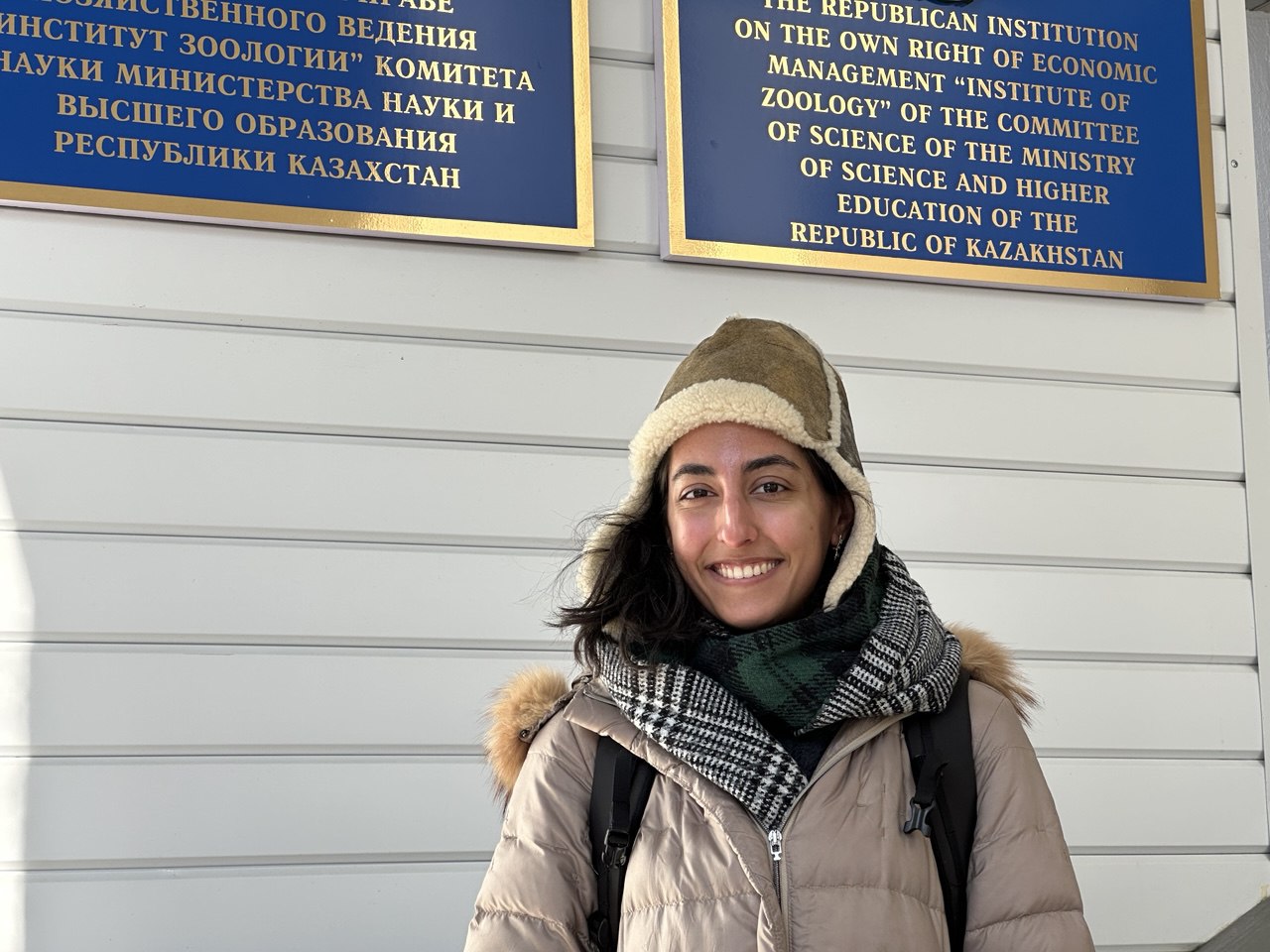
Nicole Ibrahim at the Institute of Zoology under the Ministry of Science and Higher Education of the Republic of Kazakhstan, January 2025.
The purpose of her internship was to master bird marking methods, collect feather samples for subsequent isotope analysis, and work with archived bird-banding data.
Nicole studies bird migration processes. Migration is a unique natural phenomenon: out of approximately 11,000 bird species worldwide, about 2,000 migrate each year, traveling tens, hundreds, or thousands of kilometers, crossing countries and even continents. Researching bird migration routes helps not only in understanding their behavior but also in addressing crucial issues related to species conservation and ecosystem management.
Various methods are used to track bird movements, including external and internal approaches. The external ones include classic methods such as bird banding and the use of GPS trackers, while the internal approach involves modern isotope analysis technologies. Combining these methods allows scientists to obtain the most accurate data on migration routes.
Nicole’s work focuses on studying stable isotopes that accumulate in a bird’s feathers over time. The quantity of each isotope depends on the food and water the bird consumes and on its migration habitat, since every geographical region has unique yet relatively stable isotope compositions.
These types of studies allow for more precise tracking of migration routes and for determining the geographical structure of bird populations. This is a relevant issue in ornithology, as many migratory species face extinction risks due to climate change and human activity.
One aspect of Nicole’s work involves using data from ornithological stations such as Chokpak (established in Kazakhstan in 1966) to better understand the migration connections between Central Asian birds and those of other regions.
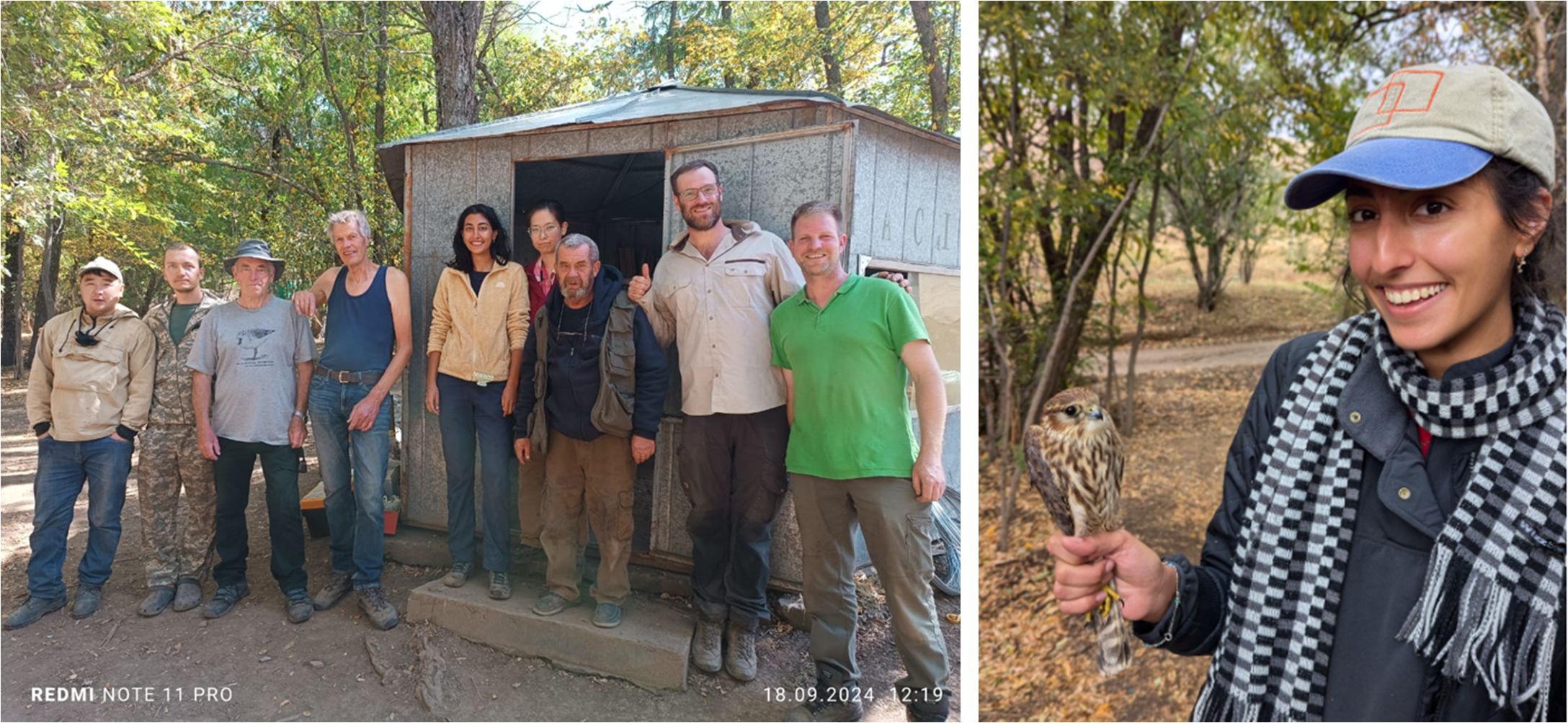
International research group (Kazakhstan, USA, the Netherlands, UK, Germany) at the Chokpak ornithological station (September 2024).
Nicole’s internship took place in two stages: first, in the field at the Chokpak ornithological station during the fall bird migration, and then at the Institute of Zoology in Kazakhstan.
Her experience at the Chokpak station proved highly beneficial, allowing Nicole not only to improve her bird-identification skills but also to learn how to take the necessary morphological measurements and band birds.
At the ornithological station, Nicole worked with birds from different orders. She selected such species as the Eurasian sparrowhawk (ястреб-перепелятник), Turkestan kestrel (туркестанский тювик), the sand martins (common and pale—обыкновенная и светлая береговушка), the European bee-eater (золотистая щурка), the yellow wagtail (желтая трясогузка), the chaffinch (зяблик), and the barn swallow (деревенская ласточка). Their migration routes in Central Asia are still not sufficiently studied, making these birds particularly interesting for research.
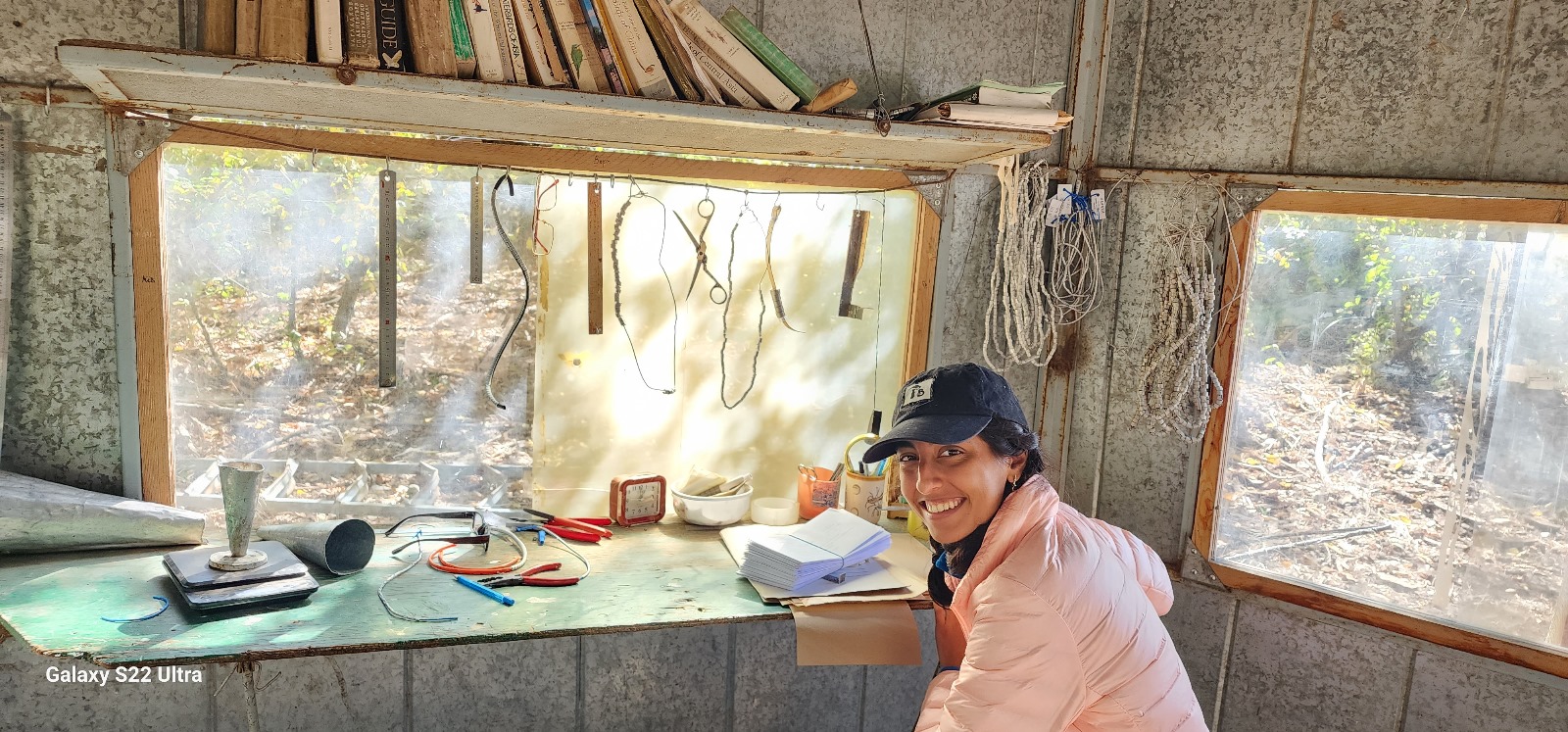
Nicole Ibrahim in the field bird-banding laboratory (Chokpak ornithological station, September 2024).
During her internship, Nicole gathered more than 10,000 feathers from various bird species, which will be sent to a laboratory at the University of Maryland for further analysis. She emphasizes that data on the birds’ age, sex, and morphometric measurements are also of particular importance because the sum of these data points will help determine more precise migration routes and identify potential threats to particular population groups.
After completing the field phase, Nicole continued her internship at the Institute of Zoology, studying archival banding materials and processing the official documents required for exporting the collected samples. Thanks to negotiations with both Kazakhstani and American authorities, she secured all the necessary permits to legally transport the feathers for isotope analysis at the University of Maryland’s laboratory. Thus, Nicole’s internship included not only intensive field practice, during which she acquired valuable practical skills, but also crucial laboratory work, laying the groundwork for further research and data analysis.
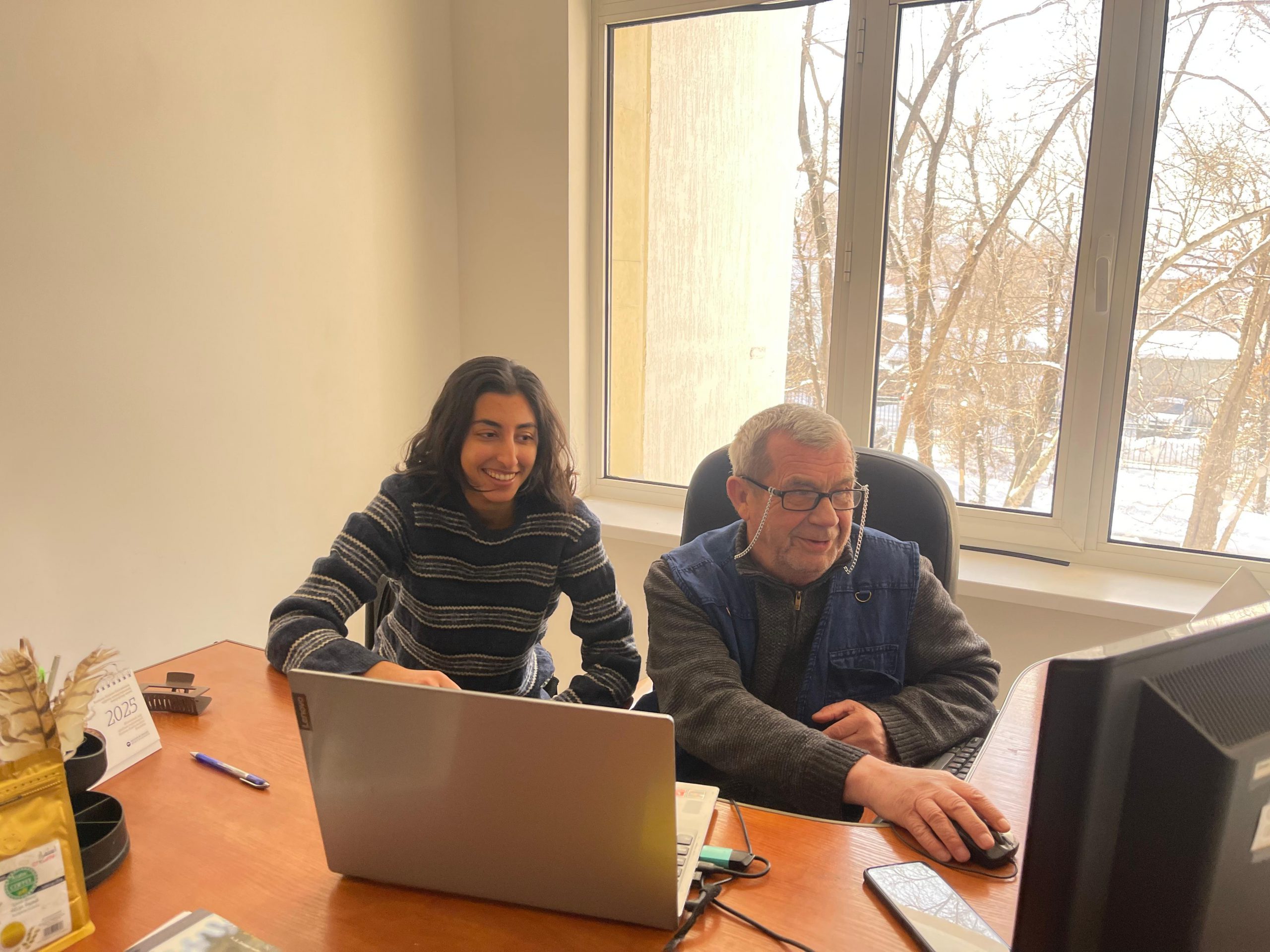
Nicole Ibrahim and her internship supervisor, the Institute’s leading researcher, A.E. Gavrilov. 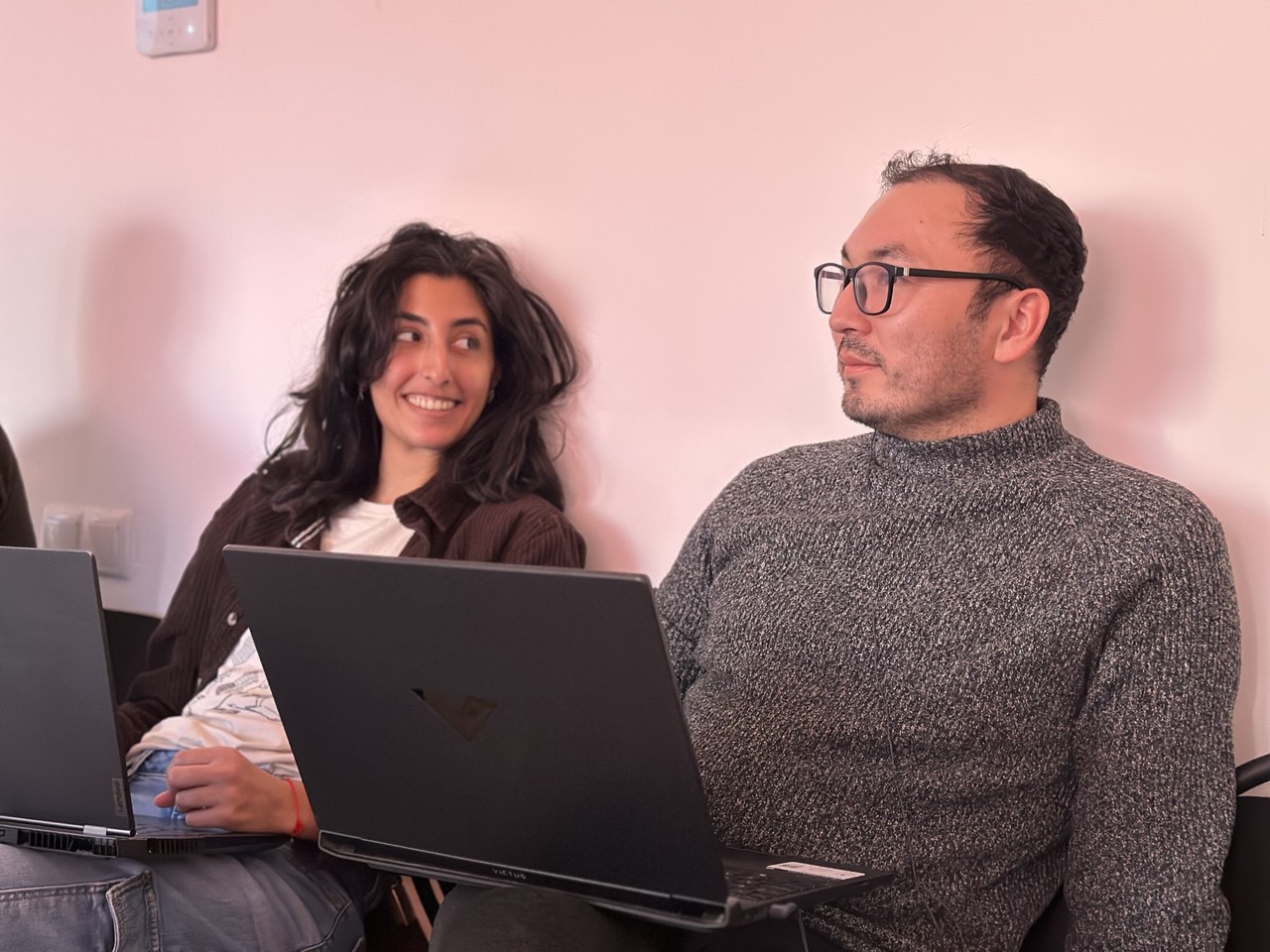
Nicole Ibrahim and B.T. Berdikulov, Acting Head of the Laboratory of Ornithology and Herpetology at the Institute of Zoology.
Until now, the ornithologists at the Institute of Zoology had not applied isotope analysis to study bird migration routes, so this endeavor became possible thanks to international cooperation between Kazakhstani specialists and their American counterparts.
Nicole Ibrahim’s internship at the Institute of Zoology not only marked a leap forward in her own scientific work but also made a significant contribution to the study of bird migrations, which will help facilitate their conservation and protection in the future.
Nicole intends to continue collaborating with the Institute of Zoology and hopes to return to the Chokpak station to continue the work she has begun. She expresses her gratitude to her Kazakhstani colleagues for their support and hospitality.
Photos by Institute of Zoology staff
February 12, 2025

